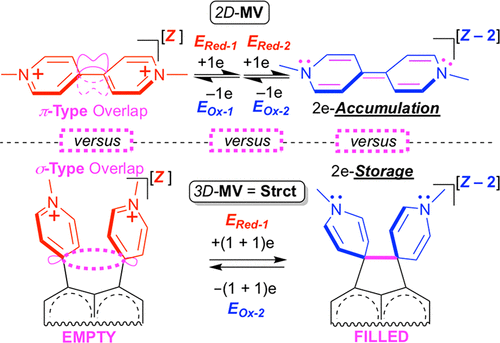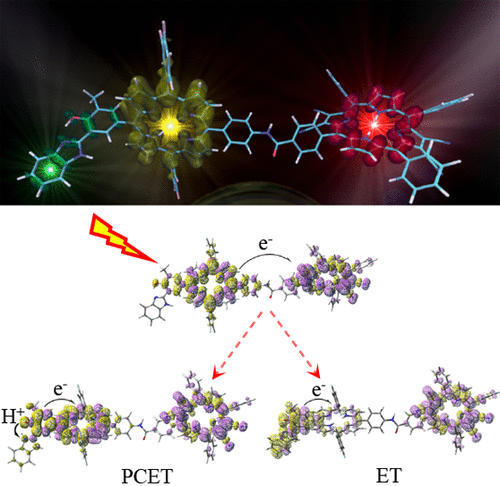Electron Storage System Based on a Two-Way Inversion of Redox Potentials
DOI: 10.1021/jacs.9b12762
ACS Publications
Molecular-level multielectron handling toward electrical storage is a worthwhile approach to solar energy harvesting. Here, a strategy which uses chemical bonds as electron reservoirs is introduced to demonstrate the new concept of “structronics” (a neologism derived from “structure” and “electronics”). Through this concept, we establish, synthesize, and thoroughly study two multicomponent “super-electrophores”: 1,8-dipyridyliumnaphthalene, 2, and its N,N-bridged cyclophane-like analogue, 3. Within both of them, a covalent bond can be formed and subsequently broken electrochemically. These superelectrophores are based on two electrophoric (pyridinium) units that are, on purpose, spatially arranged by a naphthalene scaffold. A key characteristic of 2 and 3 is that they possess a LUMO that develops through space as the result of the interaction between the closely positioned electrophoric units. In the context of electron storage, this “super-LUMO” serves as an empty reservoir, which can be filled by a two-electron reduction, giving rise to an elongated C–C bond or “super-HOMO”. Because of its weakened nature, this bond can undergo an electrochemically driven cleavage at a significantly more anodic—yet accessible—potential, thereby restoring the availability of the electron pair (reservoir emptying). In the representative case study of 2, an inversion of potential in both of the two-electron processes of bond formation and bond-cleavage is demonstrated. Overall, the structronic function is characterized by an electrochemical hysteresis and a chemical reversibility. This structronic superelectrophore can be viewed as the three-dimensional counterpart of benchmark methyl viologen (MV).





